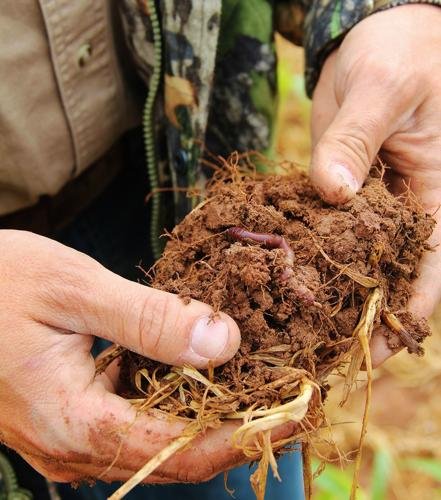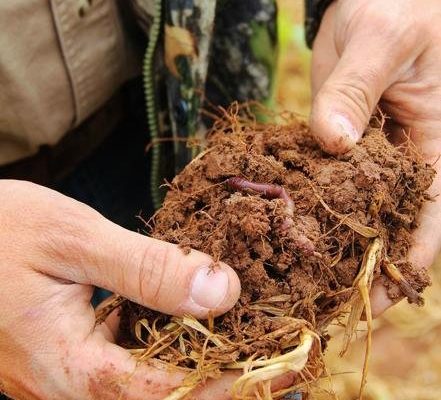
Understanding the signs of healthy earthworm populations in soil isn’t just for farmers or gardening enthusiasts. It’s for anyone who appreciates the wonders of nature and wants to grow their plants successfully. From the way the soil looks to how easily it drains, there are various indicators that tell you if your earthworm community is flourishing. And trust me, spotting these signs can make all the difference in your gardening success.
Earthworm Benefits for Soil Health
Let’s kick things off by understanding why earthworms are so vital for soil health. Picture earthworms as nature’s little gardeners. They burrow through the soil, breaking up compacted earth and allowing air and water to penetrate more easily. This natural aeration is crucial because it helps plant roots access the nutrients they need to thrive.
Earthworms also play a significant role in nutrient cycling. As they consume organic matter, like decaying leaves and plant material, they break it down into a form that plants can readily absorb. The castings—essentially earthworm poop—are packed with nutrients like nitrogen, phosphorus, and potassium. These nutrients are like the superfood for your plants. When earthworm populations are healthy, your soil becomes rich and fertile, promoting vibrant plant growth.
Furthermore, earthworms help improve soil structure. Their tunneling creates channels in the soil, which aids in drainage and reduces the risk of waterlogging. This means that when it rains, the water can quickly seep into the ground rather than sitting on top. So, if you see plenty of earthworms in your soil, you can bet that the soil is benefiting from their hard work.
Visible Earthworm Activity
One of the simplest ways to check for healthy earthworm populations is to look for their activity on the surface. After a rainy day, you might notice a few earthworms wriggling about. This is a good sign! Earthworms often come to the surface when the soil is saturated with water—it’s easier for them to move around when the ground is wet.
But it’s not just about seeing them squirming around. Pay attention to the soil texture as well. Healthy earthworm activity means you’ll likely find soft, crumbly soil that can be easily worked with your hands. If the soil feels compact or hard, it may indicate that earthworm numbers are low.
And here’s a fun little indicator: if you spot earthworm castings sprinkled on the soil surface, give yourself a high five! These little piles are a testament to happy, healthy earthworms at work. Their castings improve soil health and structure, making them an essential sign of thriving populations.
Soil Composition and Texture
Soil that’s rich in organic matter typically supports a larger population of earthworms. If you’re dealing with heavy clay or sandy soil, you might find it a bit trickier. Earthworms prefer loamy soil that holds nutrients and moisture while allowing for good drainage.
When you scoop up some soil, take a moment to assess its texture. Does it feel gritty, like sand? Or perhaps it’s sticky and heavy, like clay? Healthy earthworm populations thrive in soil that’s loamy, meaning it has a balance of sand, silt, and clay. If your soil leans more towards heavy clay or pure sand, consider adding organic matter like compost or mulch.
Adding organic material not only makes the soil more appealing to earthworms but also helps retain moisture and nutrients. It’s a win-win situation. Tossing in some shredded leaves or well-rotted manure will create a cozy home for earthworms to thrive.
Earthworm Casting Quality
Speaking of castings, let’s dive deeper into what makes them a sign of healthy earthworm populations. Earthworm castings are dark, crumbly, and rich in nutrients. If you’re lucky enough to find some in your garden, you’re looking at a mini treasure trove of good stuff for your plants.
When earthworm castings are abundant, you’ll notice a darker color in the soil, which indicates a healthy nutrient balance. The presence of castings can not only enrich your soil but also improve moisture retention. Healthy castings are often referred to as “black gold” because they’re so beneficial for plant growth.
Take a moment to observe the castings—if they’re dry and crumbly, your worms are doing their job well. But if they’re soggy or decomposing too quickly, it may signal overwatering or other issues. That’s your cue to adjust your watering practices or explore other soil amendments.
Plant Growth and Health
Another great sign of healthy earthworm populations is the overall growth and health of your plants. When earthworm numbers are high, you’ll likely notice robust plants that are full of life. Healthy soil with plenty of nutrients leads to vigorous growth, lush leaf development, and an abundance of flowers or fruits.
Take a walk through your garden and observe your plants. Are they vibrant, with a rich green color? Are they producing flowers? These are excellent indicators that your earthworms are doing their job. If, on the other hand, your plants appear stunted, yellowed, or exhibit signs of stress, it might be time to investigate your soil’s health.
You might also notice that plants in areas with a high earthworm population grow taller and produce larger fruits or flowers than those in barren patches. It’s like having a personal gardener working underground, ensuring your plants get everything they need to flourish.
Testing for Earthworm Presence
If you want to get a bit hands-on to look for earthworms, there are simple tests you can conduct. One of the most popular methods is the “earthworm count” technique. Simply dig down into your soil about six inches and gently sift through it.
Count how many earthworms you find. A good guideline is that five to ten worms per spadeful of soil suggests a healthy population. If you’re finding fewer than that, it might be time to enhance your soil with compost or other organic matter.
Another fun way to check is by using a simple “trench method.” Dig a shallow trench in the soil and add water. Wait for a day, then check for any earthworms that have migrated. If you see a good number moving towards the surface, give yourself a pat on the back—you’ve got a healthy population!
Recognizing the signs of healthy earthworm populations in your soil is crucial for any gardener or plant lover. From the visible activity of earthworms on the surface to the quality of castings and the overall health of your plants, these indicators can guide you in creating a thriving ecosystem in your backyard.
By fostering a healthy environment, you’ll not only support your plants but contribute to the larger cycle of life in your garden. It’s a delightful journey, watching the earthworms do their thing and knowing that you’re helping maintain a vibrant garden. So grab your trowel, dig in, and get excited about the bustling life beneath your feet!

